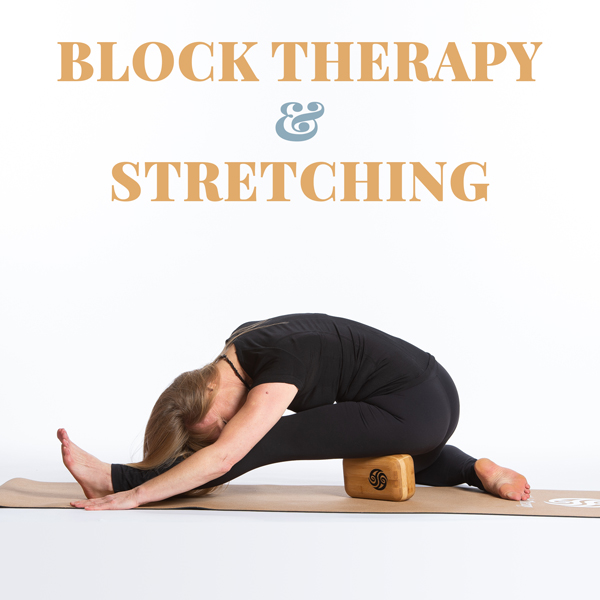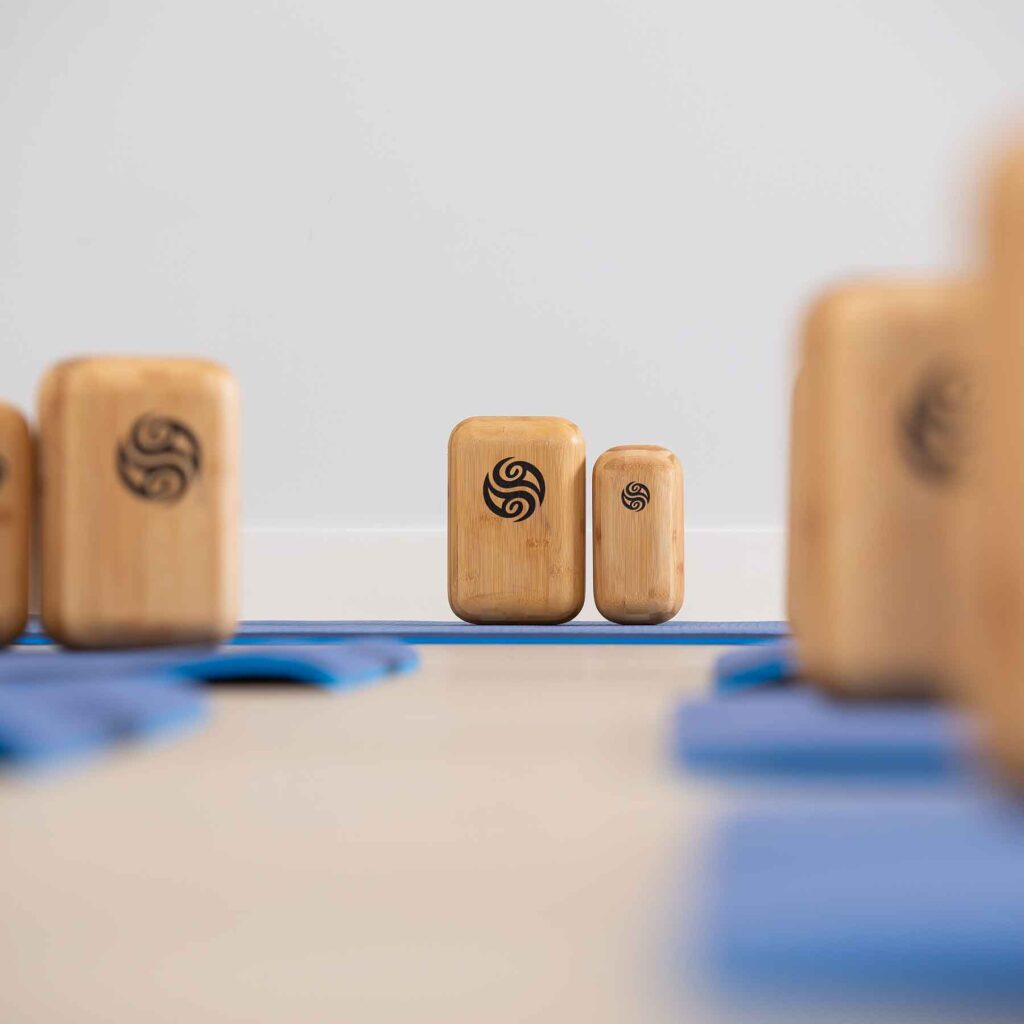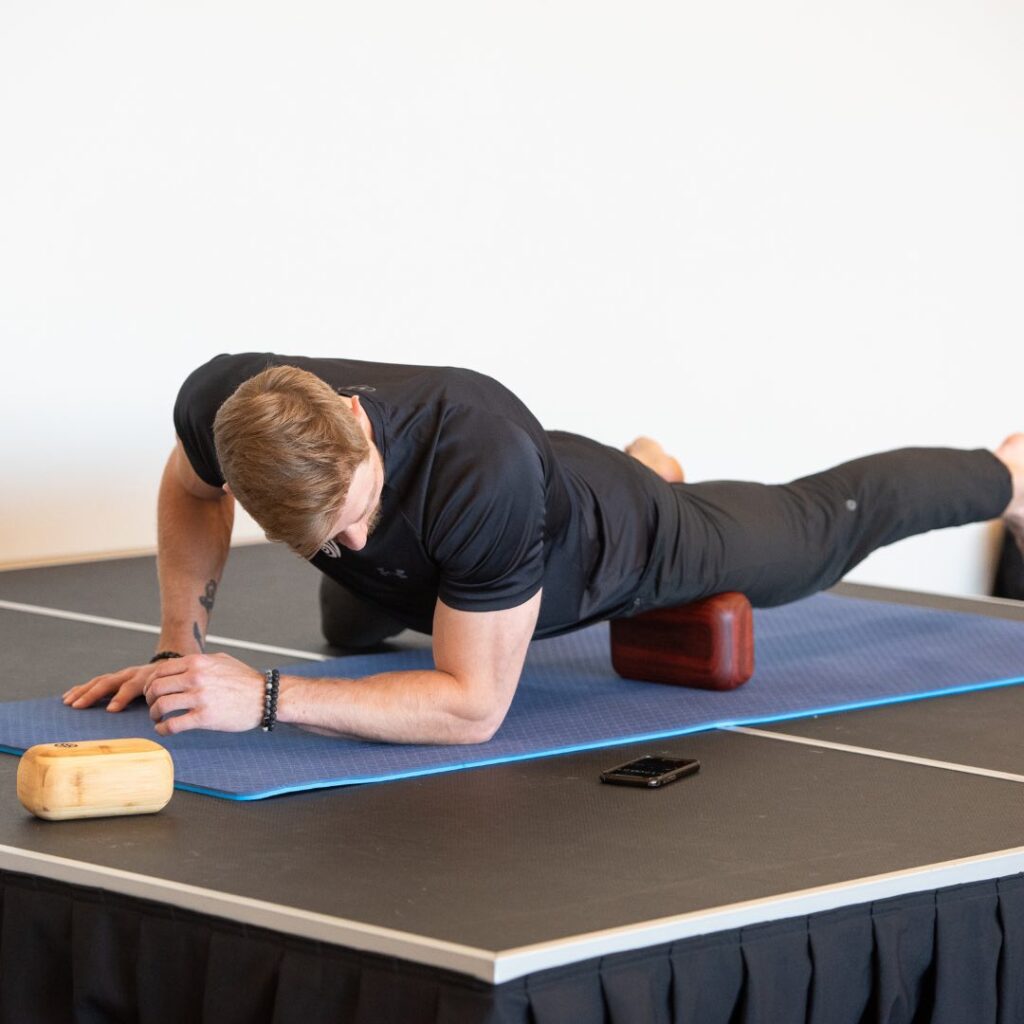To Stretch Or Not To Stretch – That Is The Question

We are often asked in our Block Therapy community – is it better to block before or after stretching? This is a great question as there are benefits to both, so I will go into detail what is actually happening when we combine these actions.
Firstly, I want to share the difference that occurs between blocking and stretching. Let’s consider the hamstring muscle for example. When you do a forward bend, you will go as far as your body allows you, until you feel pain or tension. That limitation may be experienced in your hamstring, but you may feel the limitation in your back or maybe your calf. Either way, something is stopping the movement of the forward bend, and people often assume it’s because they have tight hamstrings.
The hamstrings may be tight, but there are a number of other areas directly affecting this movement. For instance, with most people, the way the fascia wraps around the shin bones will cause a torquing in the knee joint, as well as cause the ankle to collapse, called pronation. This system works its way up the chain into the pelvis. As the fascia grips onto bone to create stability, it holds the system in a locked embrace, creating tension everywhere. As a forward bend is such a common and obvious movement, it’s noticed as tension in the back of the legs even though the tension is coming from the entire system.
To improve flexibility in one muscle or muscle group, we need to release the adhesions in all areas to resume freedom. This is why with Block Therapy, we don’t just focus on the area of concern, the pain or issue sight, but also the cause sites . . . and there can be multiple cause sites to any dysfunction in the body.
So, to address the question of when blocking is most beneficial to stretching, let’s review the benefits to both so you can see what makes most sense to you (and I would try both as every person is different).
The benefits to blocking before a stretch are amazing. If you are wanting to focus on opening the shoulder joint for example, blocking the ribcage, surrounding areas and getting deep into the joint prior to stretching will release adhesions that would have otherwise limited the stretch. You will experience a deeper stretch as a result of the freedom gained from blocking, as more of your tissue will be available to lengthen.
Blocking after stretching is great as the stretch itself will surface the deeper adhesions for you to melt. The stretch will show you where you are limited in your range, so you can directly go after the specific areas to maximize the lengthening of the fibers.
The most effective of all is to toggle – stretch to find the limitation, block the area of pain or tension. Resume the stretch and enjoy the new freedom, as well as pull up the deeper adhesions to continue to free the area and improve the flexibility.
In order to have a body that is fluid, flexible and free, you need to have healthy fascia that can glide over surfaces rather than stick and adhere. This is what the Block Therapy system is all about – creating healthy fascia.
For those in the Block Therapy membership, I am doing a live 1-hour Block/Stretching class to Release the hamstrings. We will follow the path of actively moving into a stretch, identifying where you are stuck, blocking that area, then resuming with the stretch. Over the course of an hour, you will be amazed at the amount of range of motion you gain, and the freedom in the lower body in general.
This will take place on January 22nd at 10:00am central, and then will be available in the membership for continued access.
If you would like to join our private FB community to learn more, you can reach out and ask those who know of the amazing benefits of this system.
Here is to a year filled with health, freedom and grace within.
Breathe & Believe
Next Week: Strengthening with Block Therapy








Responses